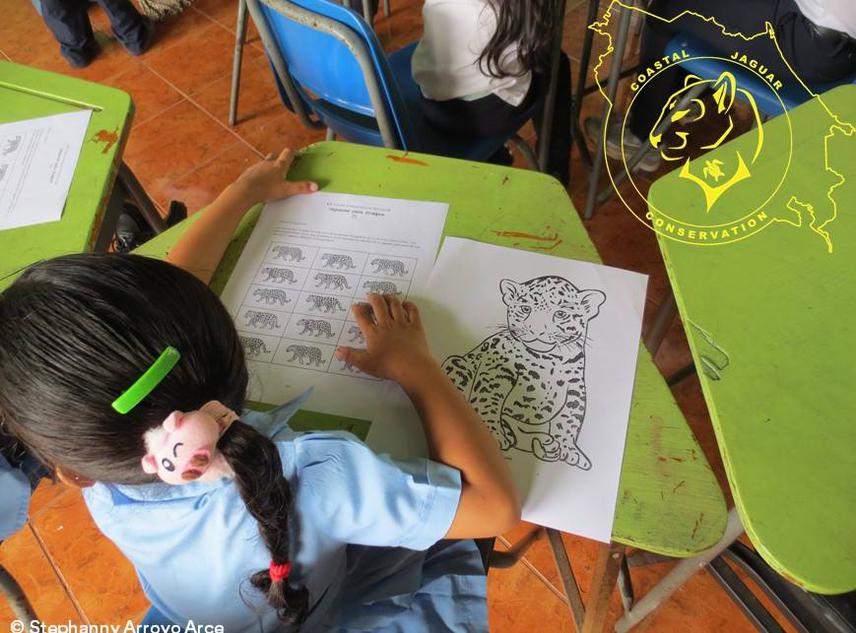Stephanny Arroyo-Arce
Other projects
9 May 2012
Habitat Selection by Jaguar (Panthera onca) in Tortuguero National Park, Costa Rica
5 Sep 2017
Monitoring Jaguar Predator-Prey Interactions and Implementation of Mitigation Methods to Reduce Human-Wildlife Conflict in Tortuguero National Park, Costa Rica
To gain a better understanding of the social structure of a top cryptic carnivore, and its interaction with marine turtles. To monitor jaguar populations and its prey species in Pacuare Nature Reserve.

Workshop for children © Ian Thomson.
Our mission is to monitor jaguar populations on the Northeastern Caribbean Coast of Costa Rica, with a specific interest in Tortuguero National Park and adjacent protected areas. One of our main goals is to study the interaction between the jaguar (an apex carnivore) with one of its main prey species; the endangered marine turtles that nest in Tortuguero beach. Our project will help us to determine if jaguars pose or not a considerable threat to the Tortuguero marine turtle population. This has been a concern from the Tortuguero local community which main economic activity focused on marine turtle tourism.
Our project is also challenging long-established theories about the social structure of jaguars, a species that has always been consider a solitary carnivore. Due to the cryptic nature of the species throughout its distribution range, this kind of information is extremely hard to document, but the interaction of the jaguars with the marine turtles have facilitated the documentation of rare and atypical behaviors in the felid, some of which have never been documented in the wild before.
Our project also highlights the importance of Tortuguero beach to support the local jaguar population. The beach not only hosts a stable prey community (marine turtles) but also contains a known population of resident and migratory jaguars. This area may well become a ‘source’ population and a stronghold for areas nearby Tortuguero, such as Pacuare Nature Reserve, Barra del Colorado Wildlife Refuge and even for the increasingly threatened Nicaraguan jaguars.
Additionally, our project will be the first camera-trap survey conducted in Pacuare Nature Reserve. This will allow us to assess the status of the jaguar population and its prey species, as well as to evaluate the possible migration of jaguars from Tortuguero. The conclusions and recommendations generated from our project will support future conservation management plans in the area.